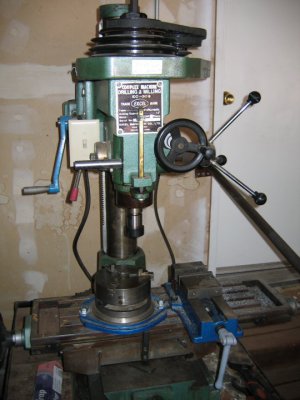I get a kick out of reading this post. That was me for about 4 years. Tramming a vice is such "old school". Nice to know when all else fails. Half the time I did the vise in a couple of minutes, the other half I chased my tail for 10-15 minutes. The methods above work. So do the You-Tube videos showing this.
Just bite the bullet and make the keys for the vise (and rotary table if you have one). Took me about two hours to make precision fit keys for the Kurt vise and Grizzly rotary table. It now takes about 60 seconds to place the vise fully in tram on the table. Most of that time is bolting it down. The tram is .0002 over a 9" precision parallel clamped in the jaws. I check it prior to doing important work and skip it for run of the mill things. Either way it hasn't changed.
Last week I took the vise off and on the table 4 times. Just the way items ended up being held. Just last week alone by time estimates here, I recovered about 1/4 of the time making the keys and I have been using the keys for a year or better now.
So, you'll twist, tap, rotate and have a good time, me, I'm going to get a cup of coffee.
Just bite the bullet and make the keys for the vise (and rotary table if you have one). Took me about two hours to make precision fit keys for the Kurt vise and Grizzly rotary table. It now takes about 60 seconds to place the vise fully in tram on the table. Most of that time is bolting it down. The tram is .0002 over a 9" precision parallel clamped in the jaws. I check it prior to doing important work and skip it for run of the mill things. Either way it hasn't changed.
Last week I took the vise off and on the table 4 times. Just the way items ended up being held. Just last week alone by time estimates here, I recovered about 1/4 of the time making the keys and I have been using the keys for a year or better now.
So, you'll twist, tap, rotate and have a good time, me, I'm going to get a cup of coffee.




 As stated, The tram hasn't changed in the last year, But I still double check all different ways if I'm doing something with a critical dimension.
As stated, The tram hasn't changed in the last year, But I still double check all different ways if I'm doing something with a critical dimension.
